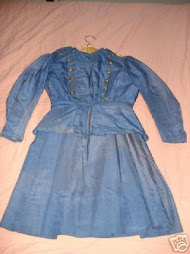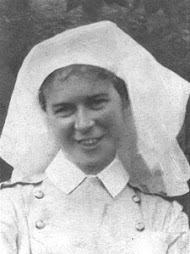This is a tale of two Great War hospital ships and two nurses who served on both at different times. Each woman faced the threat of death at sea. One would survive, the other would not.
Hospital ships plied the Atlantic during the Great War. They transported the wounded home to Canada and transported medical staff back to Britain to rejoin their units. In June 1918, Marguerite Condon was one such nurse, enroute to Canada on HMHS Araguaya. The ship was full of patients—yet Marguerite must have felt it was a break to take care of wounded men in a state of the art hospital enroute to Canada rather than under canvas on the Western front. She had already spent much of her time there as a nurse. As her grandson Gordon MacLean writes: "She had fairly recently graduated as a Nurse in Boston when the war commenced & signed on with the initial contingent of the Harvard Medical Unit which got her to the battlefields of France by mid-1915. After a year of service, she obtained a commission in the Canadian Army Medical Corps and alternated between service in the field & serving on Hospital ships convey wounded soldiers home." Although now on board the Araguaya, Condon had previously served on the Llandovery Castle.
On June 27, the same day that the Araguaya left the dock for Canada, the Llandovery Castle was nearly back to Britain, empty save for its medical staff and ship’s crew. There were 258 people on board. These included 94 members of the CAMC, including 14 nurses. One of those nurses was 35-year-old Alexina Dussault. The Montreal native was one of 120 graduates of the Royal Victoria Hospital nursing program who were now serving overseas. She had enlisted in September 1914, and like Marguerite Condon, had also served on other hospital ships, including the Araguaya and the Letitia (both in 1917). Alexina had also served in France at No. 2 Canadian Stationary Hospital and at the Ontario Military Hospital in Orpington, Kent.
All electric lights on board the Castle were burning and a huge electric cross was lit over the bridge. There were strings of green and white lights hanging along the side of the ship, all to alert any enemy submarines that she was a hospital ship and not to be subject to attack. Unfortunately, as I have described in other blogs, this did not deter Lieutenant Helmut Patzig, the commander of German U-boat 86 from firing on the ship. All 14 nurses on the Castle were killed when their lifeboat was sucked under the ship. Lifeboats that did manage to get away from the sinking ship were rammed and fired on by the German sub. Only 24 people survived. Patzig later defended his actions by suggesting that the Castle was carrying troops, an untrue allegation that could have been checked if the u-boat crew had boarded and inspected the ship (as it was allowed to do).
An interesting twist to the story is that Marguerite Condon told her son (Gordon's dad) that the "Araquaya, on its return voyage was involved with the recovery of the
murdered Nursing Sisters' remains & she personally witnessed them being brought on board." I have not been able to positively confirm this. The destroyer Lysander picked up survivors. However, I have read an account from a member of the crew of a different ship (not the Araguaya) that passed through the area soon after the sinking. He reported seeing bodies floating among the wreckage of the Castle. This would suggest that Marguerite's story could well be true.
Subscribe to:
Post Comments (Atom)






















No comments:
Post a Comment